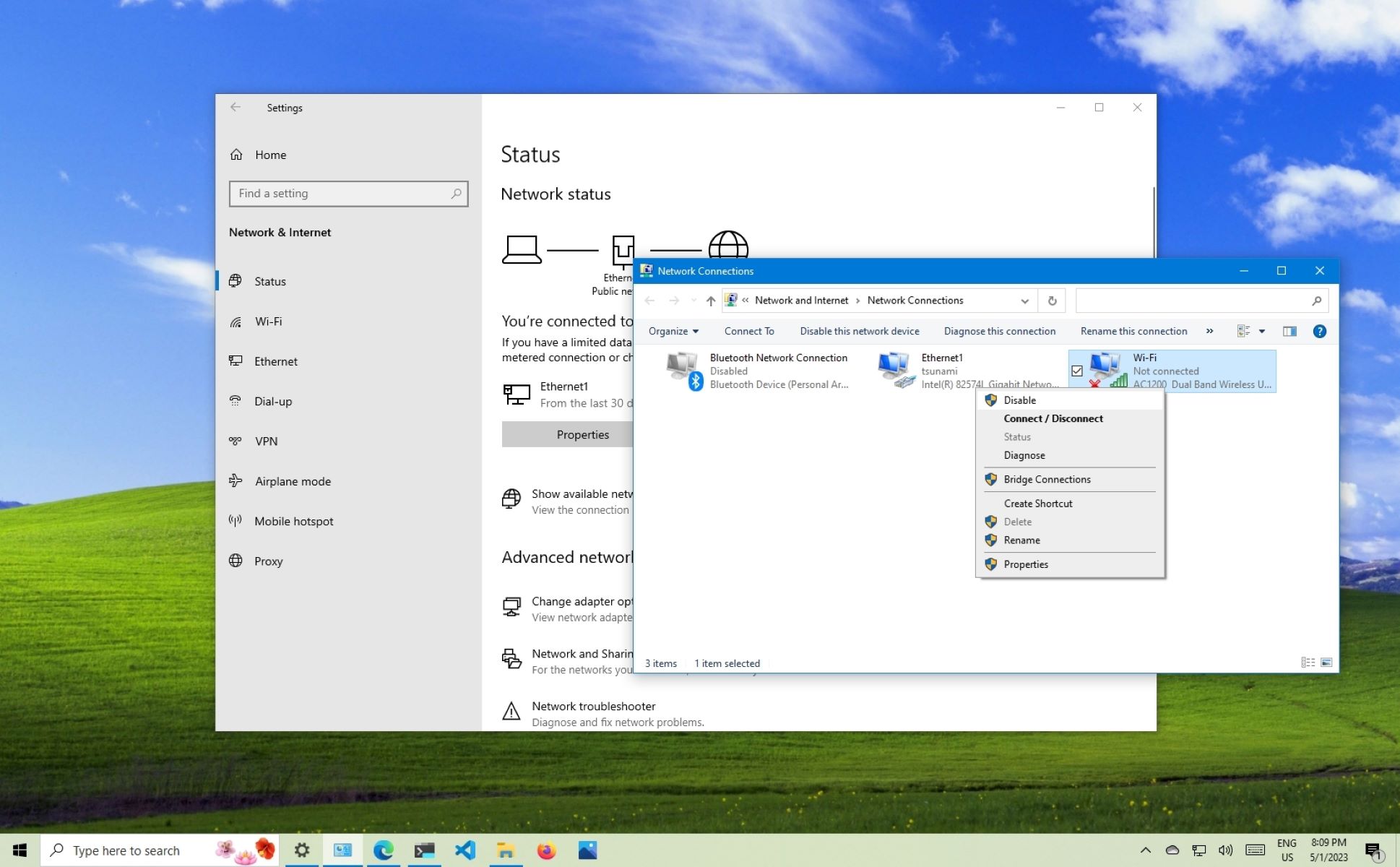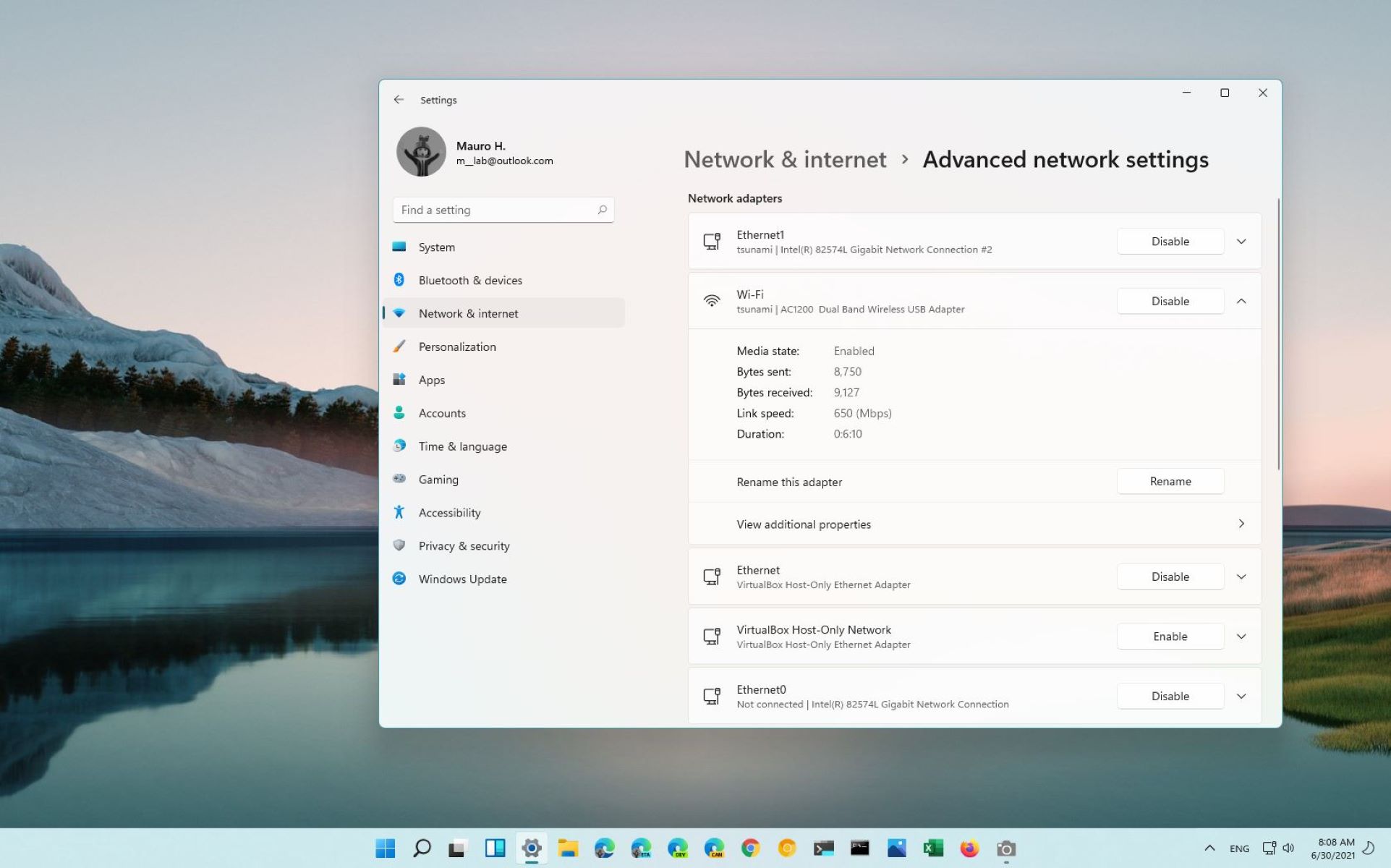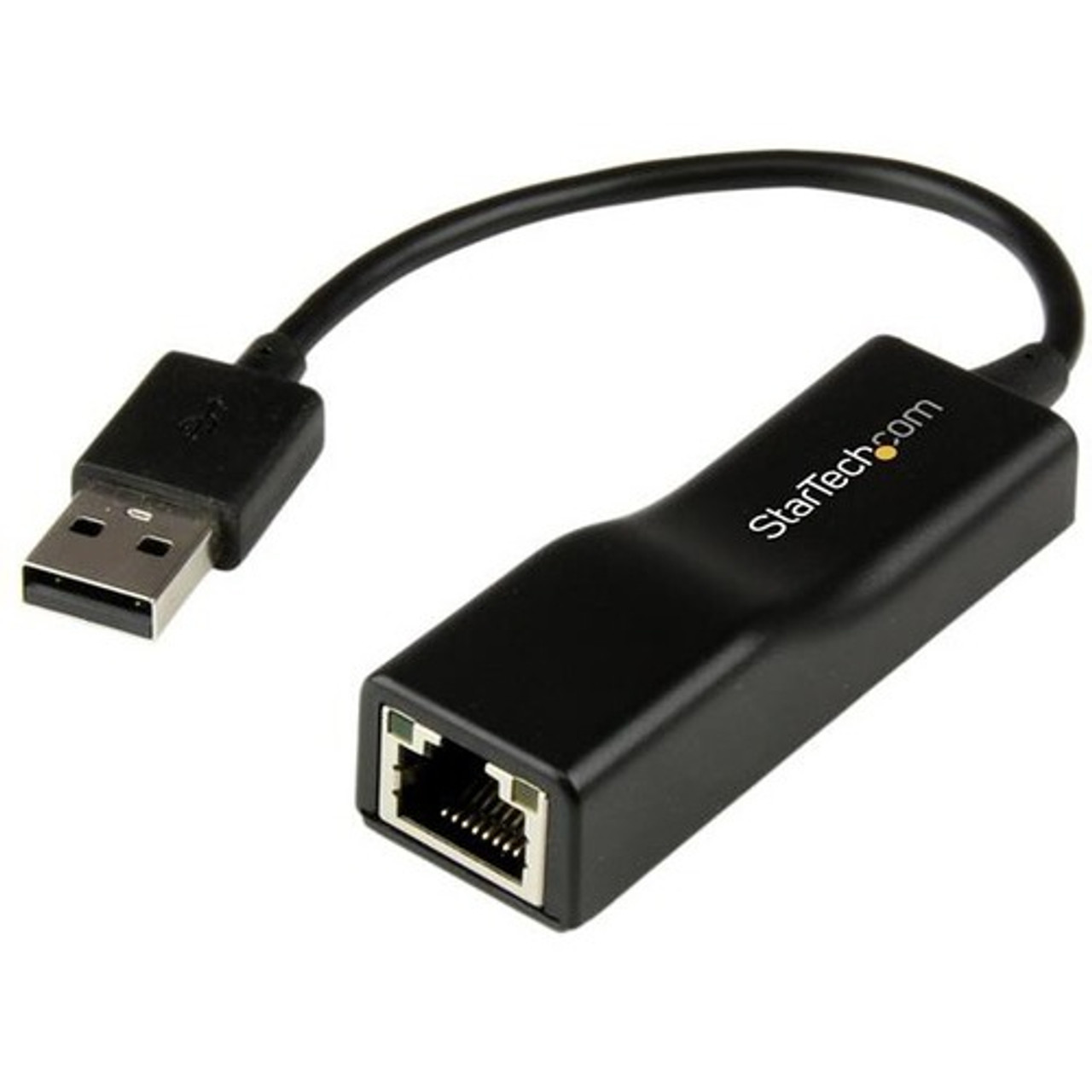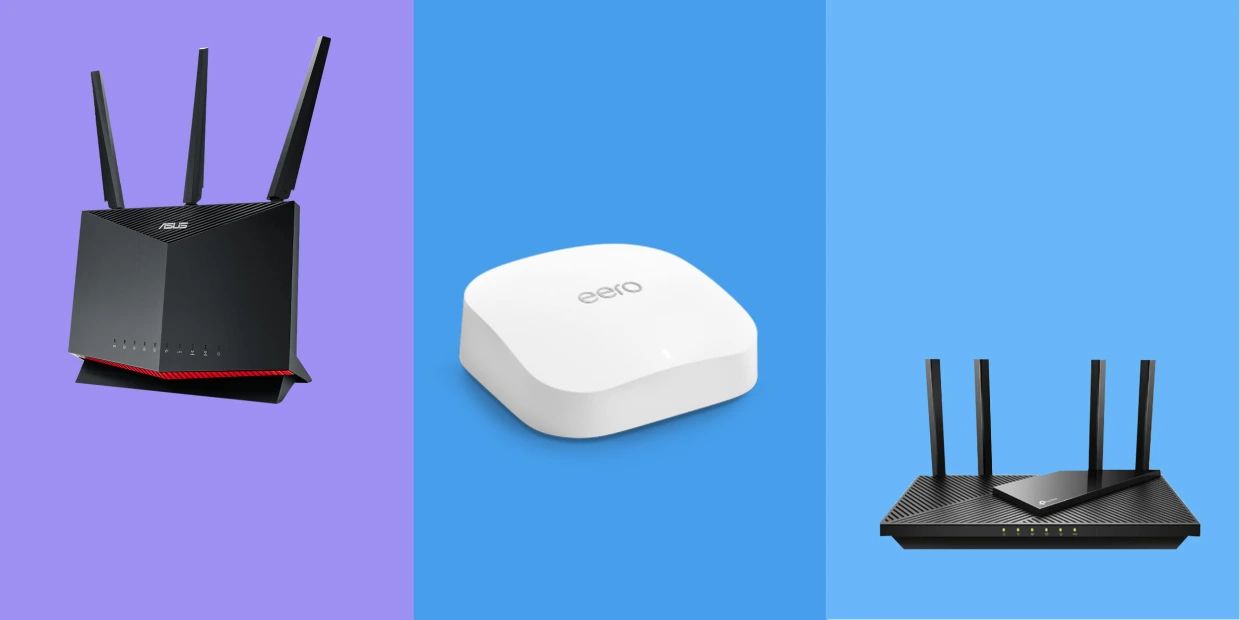Introduction
When it comes to internet connectivity, most of us are familiar with the option of either using a wired Ethernet connection or a wireless WiFi connection. While both options have their advantages, there are situations where it might be beneficial to disable WiFi when you have an Ethernet connection available.
Why would anyone want to disable WiFi when Ethernet is connected? The main reason is performance. While WiFi is convenient, it is also susceptible to interference and can be affected by the distance from the router. On the other hand, an Ethernet connection offers a faster and more reliable connection, making it ideal for tasks that require high bandwidth or low latency, such as online gaming or streaming high-definition videos.
In this article, we will explore different methods to disable WiFi when Ethernet is connected, ensuring that your device prioritizes the more stable and faster connection. By doing so, you can optimize your internet experience while ensuring a seamless and uninterrupted connection for your wired activities. So, let’s dive in!
Why Disable WiFi When Ethernet Is Connected?
You might be wondering why you should bother disabling WiFi when you have a reliable Ethernet connection available. Here are a few reasons why this can be beneficial:
1. Stability and Reliability: Ethernet connections are generally more stable and reliable compared to WiFi. By disabling WiFi when you have an Ethernet connection, you ensure a consistent and uninterrupted internet connection. This is especially crucial when you are engaged in activities that require a stable and fast connection, such as online gaming, video conferencing, or downloading large files.
2. Bandwidth Optimization: When both WiFi and Ethernet connections are active simultaneously, your device may split the internet traffic between the two. Disabling WiFi allows you to prioritize the Ethernet connection, ensuring maximum bandwidth for your wired activities. This can significantly improve the performance of bandwidth-intensive tasks, such as streaming high-resolution videos or transferring large files.
3. Reduced Network Interference: WiFi signals can be susceptible to interference from various sources, such as neighboring networks, electronic devices, or physical obstructions. By using an Ethernet connection and disabling WiFi, you eliminate the possibility of interference, leading to a more stable and consistent internet connection. This is especially useful in crowded areas where multiple WiFi networks can cause congestion and degrade the overall connection quality.
4. Improved Security: Wired Ethernet connections are generally considered more secure than wireless connections. By disabling WiFi, you reduce the risk of unauthorized access to your network. This is particularly important if you are working with sensitive data or if you have concerns about potential security vulnerabilities associated with WiFi networks.
5. Battery Conservation: When you disable WiFi and solely rely on the Ethernet connection, you can conserve battery life on your device. WiFi consumes more power than Ethernet, so by eliminating the need for your device to maintain a WiFi connection, you can extend your device’s battery life, making it ideal for prolonged use without access to a power source.
Considering these benefits, it’s clear why disabling WiFi when you have a reliable Ethernet connection can greatly enhance your internet experience. In the following sections, we will explore different methods to help you achieve this seamlessly and efficiently.
How to Disable WiFi When Ethernet Is Connected
Now that we understand the reasons behind disabling WiFi when we have an Ethernet connection, let’s explore some methods to achieve this. Here are three common approaches:
- Method 1: Network Adapter Settings: This method involves modifying the network adapter settings on your device to prioritize the Ethernet connection over WiFi. By adjusting the settings, your device will automatically disable the WiFi connection when an Ethernet connection is detected. The exact steps may vary depending on your operating system, but generally, you can navigate to the Network and Internet settings, locate the network connections, and modify the priority order.
- Method 2: Using Microsoft PowerShell: If you prefer a more programmatic approach, Microsoft PowerShell can be a powerful tool to disable WiFi when an Ethernet connection is available. By running a simple script, you can automate the process and ensure that WiFi is disabled whenever an Ethernet connection is detected. This method is especially useful for advanced users and those comfortable with command-line interfaces.
- Method 3: Third-Party Software: There are several third-party software options available that can help you manage your network connections and automatically disable WiFi when an Ethernet connection is detected. These software tools offer user-friendly interfaces and additional features to customize your network settings according to your preferences. Explore popular options like NetSetMan, cFosSpeed, or Intel PROSet/Wireless Software to find a solution that best suits your needs.
Depending on your technical knowledge and preferences, you can choose the method that is most convenient for you. It’s important to note that these methods may require administrative access to your device and may vary based on the operating system and hardware you are using.
Now that we have explored different methods to disable WiFi when an Ethernet connection is available, let’s evaluate the benefits of adopting this practice.
Method 1: Network Adapter Settings
One of the easiest and most accessible ways to disable WiFi when an Ethernet connection is available is by adjusting the network adapter settings on your device. The steps to do this may vary slightly depending on your operating system, but the general process remains the same.
Here is a general guide on how to disable WiFi when Ethernet is connected using network adapter settings:
- Open the settings menu on your device and navigate to the Network and Internet settings.
- Look for the Network Connections or similar option and select it.
- Locate the WiFi or wireless network adapter in the list of available network connections.
- Right-click on the WiFi adapter and select Properties.
- In the Properties window, navigate to the Networking tab or a similar option.
- Look for a checkbox or an option that says “Disable when Ethernet connection is detected” or something similar. Select this option.
- Click Apply or OK to save the changes.
By enabling the “Disable when Ethernet connection is detected” option, you are telling your device to automatically disable the WiFi connection whenever it detects an Ethernet connection. This ensures that your device prioritizes the Ethernet connection for internet access.
Remember to test the settings by connecting your device to an Ethernet cable. You should notice that the WiFi connection is automatically disabled, and your device is using the Ethernet connection as the primary means of internet connectivity.
It’s important to note that the exact steps and options may vary depending on the operating system and version you are using. If you encounter any difficulties or cannot find the specific settings mentioned above, consult the documentation or online resources related to your operating system for detailed instructions.
Now that you are familiar with one method of disabling WiFi when an Ethernet connection is available, let’s explore another method using Microsoft PowerShell.
Method 2: Using Microsoft PowerShell
If you’re comfortable with more advanced techniques and prefer a programmatic approach, you can use Microsoft PowerShell to disable WiFi when an Ethernet connection is detected. PowerShell is a powerful scripting language available in Windows operating systems that allows you to automate various tasks, including managing network connections.
Here’s a guide on how to disable WiFi using Microsoft PowerShell:
- Open the Start menu on your Windows device.
- Type “PowerShell” in the search bar.
- Right-click on “Windows PowerShell” and select “Run as administrator” to open PowerShell with administrative privileges.
- Once PowerShell is open, you can disable the WiFi connection by running the following command:
Disable-NetAdapter -Name "Wi-Fi" - Press Enter to execute the command.
By running the Disable-NetAdapter -Name "Wi-Fi" command, you are instructing PowerShell to disable the WiFi network adapter on your device. This will effectively disable the WiFi connection and prioritize the Ethernet connection for internet access.
It’s important to note that the actual name of the WiFi adapter may vary depending on your device’s configuration. To find the correct name of your WiFi adapter, you can run the following command in PowerShell: Get-NetAdapter | Where-Object {$_.InterfaceDescription -match "Wi-Fi"}
This command will display detailed information about the WiFi network adapter, including its name. Use the displayed name in the Disable-NetAdapter command to disable the correct adapter.
Using PowerShell to disable WiFi when an Ethernet connection is detected gives you more control and flexibility. You can also incorporate this command into scripts or automate it to run whenever an Ethernet connection is established. However, be cautious when using PowerShell commands, as incorrect usage or modifications can affect your device’s network connectivity.
Now that you are familiar with another method of disabling WiFi using Microsoft PowerShell, let’s explore a third-party software solution.
Method 3: Third-Party Software
If you prefer a more user-friendly and customizable solution, you can explore third-party software options that can help you automatically disable WiFi when an Ethernet connection is detected. These software tools offer intuitive interfaces and additional features to streamline your network management tasks.
Here are a few popular third-party software options you can consider:
- NetSetMan: NetSetMan is a powerful network settings manager that allows you to create profiles for different network configurations. With NetSetMan, you can easily switch between network profiles, including one that disables WiFi when an Ethernet connection is available. This lightweight and versatile software offers various customization options and is compatible with different versions of Windows.
- cFosSpeed: cFosSpeed is a network acceleration software that not only optimizes your internet connection but also lets you prioritize network traffic based on your preferences. It has a feature called “WiFi Auto Off” which automatically disables WiFi when an Ethernet connection is detected. cFosSpeed offers additional features like real-time traffic analysis and bandwidth management, making it a comprehensive solution for network optimization.
- Intel PROSet/Wireless Software: If you have an Intel wireless network adapter, you can use the Intel PROSet/Wireless Software to manage your network connections. This software allows you to configure advanced settings and provides an option to disable WiFi when an Ethernet connection is available, ensuring a seamless transition between different network types.
These are just a few examples of third-party software options available. Depending on your requirements and preferences, you can explore other software solutions as well.
When choosing third-party software, make sure to download and install it from trusted sources. Read user reviews and check the compatibility with your operating system to ensure a smooth experience.
Using third-party software can provide you with more control and automation when it comes to disabling WiFi when an Ethernet connection is detected. These tools often offer additional features that can enhance your overall network management experience.
Now that we have explored different methods, let’s move on to discuss the benefits of disabling WiFi when Ethernet is connected.
Benefits of Disabling WiFi When Ethernet Is Connected
Disabling WiFi when an Ethernet connection is available offers several advantages that can greatly enhance your internet experience. Let’s take a look at some of the key benefits:
1. Enhanced Stability and Speed: By prioritizing the Ethernet connection, you ensure a more stable and faster internet connection. This is especially important for bandwidth-intensive activities like online gaming, video streaming, or large file transfers. Disabling WiFi eliminates the potential for signal interference and ensures a dedicated and reliable connection.
2. Optimal Bandwidth Utilization: When both WiFi and Ethernet connections are active, your device may split the internet traffic between the two. Disabling WiFi allows you to consolidate the bandwidth on the Ethernet connection, ensuring maximum speed and performance for your wired activities. This improves the overall efficiency of your network and reduces potential network congestion.
3. Improved Security: WiFi networks are more susceptible to security risks compared to wired Ethernet connections. By disabling WiFi, you reduce the risk of unauthorized access to your network, which can protect your sensitive data and personal information. This is particularly important if you are working with confidential information or if you have concerns about potential security vulnerabilities associated with WiFi networks.
4. Battery Conservation: WiFi consumes more power than Ethernet, and by disabling WiFi when an Ethernet connection is available, you can prolong your device’s battery life. This is beneficial when you are using your device on the go or in situations where access to a power source is limited. It allows you to ensure that your battery is used efficiently for essential tasks while maintaining a stable and fast internet connection.
5. Seamless Network Transition: Disabling WiFi when Ethernet is connected ensures a seamless transition between different network types. Your device will automatically switch to the Ethernet connection when available, and you won’t experience interruptions or delays caused by network switching. This is particularly useful when you move between different locations, such as home, office, or public spaces, where you may have both WiFi and Ethernet options available.
6. Reduced Network Interference: WiFi signals can be affected by various factors, including neighboring networks, physical obstructions, and electronic devices. By using an Ethernet connection and disabling WiFi, you eliminate the possibility of signal interference, resulting in a more reliable and stable internet connection. This is especially beneficial in crowded areas with multiple WiFi networks, such as apartments, offices, or public places.
By leveraging the benefits of disabling WiFi when an Ethernet connection is available, you can optimize your internet experience and ensure seamless connectivity for your wired activities. It’s important to consider these advantages and choose the method that works best for you and your specific needs.
Now, let’s summarize the key points discussed in this article.
Conclusion
Disabling WiFi when an Ethernet connection is available offers numerous benefits, including enhanced stability, improved speed, and optimized bandwidth utilization. By prioritizing the more reliable and faster Ethernet connection, you can ensure a seamless and uninterrupted internet experience for your wired activities.
In this article, we explored three methods to disable WiFi when Ethernet is connected. You can adjust the network adapter settings on your device, utilize Microsoft PowerShell commands, or utilize third-party software solutions to automate the process. Each method provides different levels of convenience and customization, allowing you to choose the approach that best suits your needs.
By disabling WiFi, you not only optimize your internet connectivity but also enhance security by reducing the risk of unauthorized access. Additionally, you conserve battery life on your device and minimize network interference caused by surrounding WiFi networks.
Remember to consider the specific requirements and capabilities of your device and operating system when implementing these methods. Additionally, ensure you download third-party software from trusted sources to maintain the security and stability of your system.
In conclusion, by disabling WiFi when you have an Ethernet connection available, you can make the most out of your network connections and enjoy a faster, more stable, and secure internet experience.

























